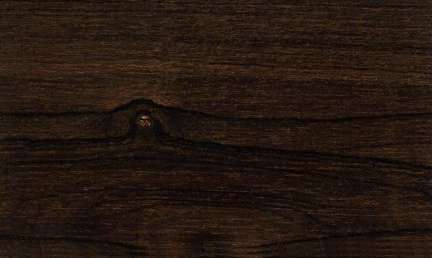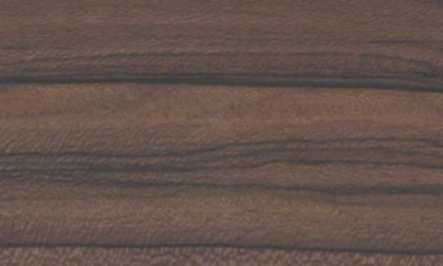   
Canalete (Cordia dodecandra)
Family: Boraginaceae
Common names: Amapa asta, Amapa beba, Amapa bola, Anacuite, Asta, Baria, Barl, Bocote, Bojon, Bonom, Canalete, Canaletta, Chackopte, Copite, Cupane, Freijo, Grisino, Gueramo, Habeen, K'an-k'opte, Keopte, Kopte, Laurel, Negra, Ocotillo meco, Palo de asta, Pardillo del monte, Peterebi, Siricote, Siricote blanco, Trompillo, Varia, Veria, Veria prieta, Zac-copte, Ziricote
Distributed in: Belize, Guatemala, Honduras, Mexico (Central America, Latin America)
Distribution overview: Belize, Brazil, Colombia, Florida, Guatemala, Mexico (Campeche, Chiapas, Quintana Roo,Veracruz, Yucatan), Venezuela, West Indies. A lowland rainforest species. In Quintana Roo, the species occurs in forests on black soils and in secondary formations.
Common uses: Beams, Bedroom suites, Billiard-cue butts, Boat building, Building construction, Cabin construction, Cabinetmaking, Canoes, Chairs, Chests, Concealed parts (Furniture), Concrete formwork, Construction, Core Stock, Decks, Decorative veneer, Desks, Dining-room furniture, Domestic flooring, Dowell pins, Dowells, Drawer sides, Excelsior, Factory construction, Figured veneer, Fine furniture, Floor lamps, Flooring, Flooring: industrial heavy traffic, Form work, Foundation posts, Framing, Furniture , Furniture components, Furniture squares or stock, Furniture, Hatracks, Heavy construction, Joinery, Joists, Kitchen cabinets, Lifeboats, Light construction, Living-room suites, Office furniture, Paneling, Plywood, Railroad ties, Sporting Goods, Tool handles, Turnery, Veneer: decorative
Environment profile: Vulnerable in parts of its natural habitat
Tree size: Tree height is 10-20 m
Colors: the heart isRed, Reddish brownand the sapwoodYellow, Yellow reddish-brown.The grain isStraight to interlocked, the textureMediumand the lusterMedium
Natural durability: Naturally resistant
Kiln Schedules: UK=E US=T6D2/T3D1 Fr=5
Drying Defects: Moderate end spitting, Severe end splitting
Ease of Drying: Easy
Tree Identification: Bole/stem form is straight
Comments: General finishing qualities are rated as good
Boring: Good results
Cutting Resistance: Easy to saw
Gluing: Glues well
Moulding: Easy to mould
Movement in Service: Easy to mould
Nailing: Good nailing properties
Planing: good
Response to hand tools: Excellent response
Sanding: Very good results
Veneering qualities: Diifficult to veneer, Suitable for slicing
Turning: Good results
Polishing: Excellent;
- Numerical data Metric
- Numerical data English
- Strength properties
- References
 |
 |
 |
 |
| Item |
Green |
Dry |
Metric |
| Specific Gravity |
0,66 |
|
|
| Density |
|
849 |
kg/m3 |
| Bending Strength |
758 |
1018 |
kg/cm2 |
| Crushing Strength |
|
|
kg/cm2 |
| Hardness |
|
1035 |
kg |
| Impact Strength |
|
|
cm |
| Shearing Strength |
|
|
kg/cm2 |
| Stiffness |
97 |
111 |
1000 kg/cm2 |
| Tangential Shrinkage |
6 |
|
% |
| Radial Shrinkage |
3 |
|
% |
| Weight |
801 |
641 |
kg/m3 |
| Maximum Load |
|
|
cm-kg/cm3 |
| Toughness |
|
383 |
cm-kg |
| Static Bending |
|
|
kg/cm2 |
|
 |  |  |  | | Item | Green | Dry | English | | Bending Strength | 10784 | 14481 | psi | | Density | | 53 | lbs/ft3 | | Hardness | | 2282 | lbs | | Stiffness | 1388 | 1590 | 1000 psi | | Toughness | | 333 | inch-lbs | | Specific Gravity | 0.66 | | | | Weight | 50 | 40 | lbs/ft3 | | Radial Shrinkage | 3 | | % | | Tangential Shrinkage | 6 | | % | | Volumetric Shrinkage | 8 | | % | |
Hardness (side grain) = hard
Modulus of Elasticity (stiffness) = low
Shrinkage, Volumetric = small
Shrinkage, Tangential = small
Shrinkage, Tangential = moderate
Shrinkage, Radial = small
Shrinkage, Radial = moderate
Resists denting and marring
Density = very high
Density (dry weight) = 53-60 lbs/cu. ft.
Density (dry weight) = 46-52 lbs/cu. ft.
Bending strength (MOR) = medium
Bending strength (MOR) = low
Bending strength (MOR) = high
Boone, R.S., C.J. Kozlik, P.J. Bois, E.M. Wengert. 1988. Dry Kiln Schedules for Commercial Hardwoods -Temperate and Tropical. USDA, Forest Service, General Technical Report FPL-GTR-57, Forest Products Laboratory, Madison, Wisconsin.Chichignoud, M., G. Deon, P. Detienne, B. Parant, and P. Vantomme.1990.Tropical Timber Atlas of Latin America.International Tropical Timber Organization (ITTO, Centre Technique Forestier Tropical, Division of CIRAD, 45bis Avenue de la Belle Gabrielle, Nogent-sur-Marne CEDEX, France.Chudnoff, M.,1984,Tropical Timbers of the World,U.S.A. Department of Agriculture, Forest Service, Forest Products,Laboratory, Madison.Echenique-Manrique, R., Diaz Gomez, V.,1969,Algunas Caracteristicas Technologicas de la Madera de once Especies,Mexicanas. (Some technological characteristics of the wood of eleven,Mexican species.,Inst. Nac. Inv. For. Mexico Boletin Tecnico,27Gomez-Vazquez, B.G.,1981,Wood structure and potential end uses of some lesser known Mexican timber,species,Thesis for Msc. Univ. Wales BangorHandloggers.1993.Personal Communication.Howard, A.L.,1948,A Manual of Timbers of the World.,Macmillan & Co. Ltd. London 3rd ed.Kribbs, D.A. 1959. Commercial Foreign Woods on the American Market. Buckhout Lab., Dept. of Botany, The Pennsylvania State University, University Park, Pennsylvania.Pennington, T.D., Sarukhan, J.,1968,Manual para la Identificacion de campo de los Principales Arboles,Tropicales de Mexico,Inst. Nac. Inv. For. MexicoPerpetua Hardwoods.Sea Star Trading Co. - Purveyors of Fine Wood.Newport, Oregon.Personal Communication, 1993.Record, S.J., Hess, R.W.,1943,Timbers of the New World,Yale University PressSaks, E.V.,1954,Tropical Hardwoods for veneer Production in Mexico,Caribbean Forester,15(3&4, pp112-9WCMC.1992.Conservation Status Listing - Trees and Timbers of the World.World Conservation Monitoring Center - Plants Programme, Cambridge, CB3 ODL, United Kingdom.
|











